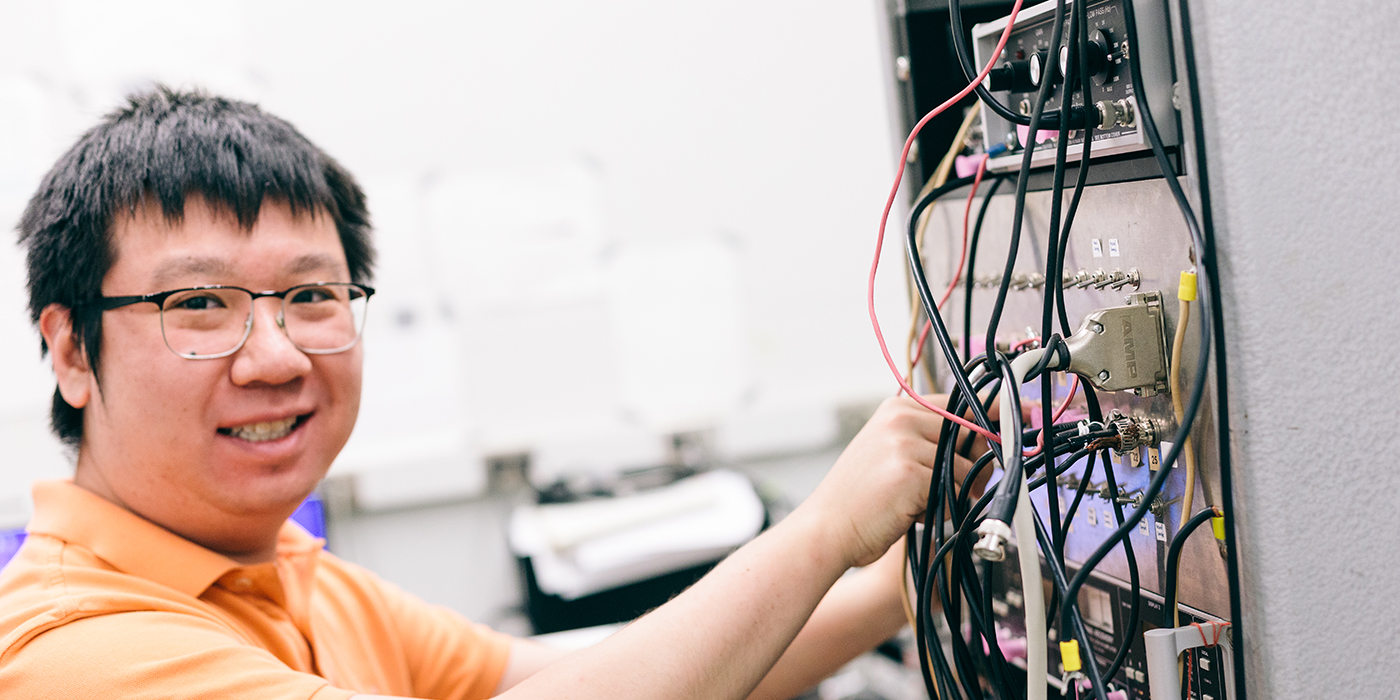Purdue physicists discover a quantum state with a new type of emergent particles: six-flux composite fermions
2024-02-19

If the fractional quantum Hall regime were a series of highways, these highways would have either two or four lanes. The flow of the two-flux or four-flux composite fermions, like automobiles in this two- to four-flux composite fermion traffic scenario, naturally explain the more than 90 fractional quantum Hall states that form in a large variety of host materials. Physicists at Purdue University have recently discovered, though, that fractional quantum Hall regimes are not limited to two-flux or four-flux and have discovered the existence of a new type of emergent particle, which they are calling six-flux composite fermion. They have recently published their groundbreaking findings in Nature Communications.
Gabor Csathy, professor and head of the Department of Physics and Astronomy at the Purdue University College of Science, along with PhD students Haoyun Huang, Waseem Hussain, and recent PhD graduate Sean Myers, led this discovery from the West Lafayette campus of Purdue. Csathy credits lead author Huang as having conceived, led the measurements and writing a large part of the manuscript. All the ultra-low-temperature measurements were completed in Csathy’s Physics Building lab. In his lab they conduct research on strongly correlated electron physics, sometimes referred to as topological electron physics.
Weak interactions of electrons are well established, and the behavior is quite predictable. When electrons interact weakly, the electron is commonly considered the natural building block of the entire system. But when the electrons interact strongly, interpreting the systemic behavior by thinking of individual electrons becomes nearly impossible.
“This occurs in very few instances, like in the fractional quantum Hall regime which we study, for example,” says Csathy. “To explain fractional quantum Hall states, the composite fermion, a very intuitive fundamental building block, comes in different flavors. They can account for a whole subset of the fractional quantum Hall states. But all the fully developed, (i.e topologically protected), fractional quantum Hall states could be accounted for by only two types of composite fermions: the two-flux and four-flux composite fermions. Here we reported a new fractional quantum Hall state that cannot be explained by any of these previous ideas! Instead, we need to invoke the existence of a new type of emergent particle, the so-called six-flux composite fermions. The discovery of new fractional quantum Hall states is scarce enough. However, the discovery of a new emergent particle in condensed matter physics is truly rare and amazing.”
For now, these ideas will be used to expand our understanding of the ordering of the known fractional quantum Hall states into a “periodic table.” It is especially notable to this process that the emergent composite fermion particle is unique in that the electron captures six quantized magnetic flux quanta, forming the most intricate composite fermion known to date.
“The numerology of this complicated physics puzzle requires quite some patience,” says Haoyun Huang, Csathy’s PhD student. “Take the nu=2/3 fractional state as an example. Since 2/3=2/(2*2-1), the nu=2/3 state belongs to the two-flux family. Similarly, for the nu=2/7 fractional state, 2/7=2/(2*4-1), so this state belongs to the four-flux family. In contrast, the fractional states we discovered closely relate to 2/11=2/(2*6-1). Before our work, no fully quantized fractional quantum Hall state was seen that could be associated with six-flux composite fermions. The situation was completely different on the theory front: The existence of these kinds of composite fermions was predicted by Jainendra Jain in his highly influential theory of composite fermions published in 1989. The associated quantization was not observed during these 34 years.”

The material used in this study was grown by a Princeton University team led by Loren Pfeiffer. The GaAs semiconductor electrical quality played a huge role in the success of this research. According to Csathy, this Princeton group is leading the world in growing the highest quality GaAs-based materials.
“The GaAs they grow is very special, as the number of imperfections is astonishingly low,” he says. “The combination of low disorder and the ultra-low-temperature measurement expertise in the Csathy lab made this project possible. One reason we were measuring these samples is that very recently the Princeton group has significantly improved the quality of the GaAs semiconductor, as measured by the tiny amounts of defects present. These improved samples will, for sure, continue to constitute a playground for new physics.”
This exciting discovery is part of ongoing research by Csathy’s team. The team continues to push the limits of discovery in their persistent pursuit of topological electron physics.
Low-temperature measurements in Csathy’s lab were supported by the U.S. Department of Energy, Office of Science, Basic Energy Sciences program, under Award No. DE-SC0006671. Sample growth efforts of the Princeton team were supported by the Gordon and Betty Moore Foundation Grant No. GBMF 4420 and the National Science Foundation MRSEC Grant No. DMR-1420541.
Related:
- Discovery of the ‘bubble phase of composite fermions’ confirms existence of a new family of quantum matter
- Gabor Csathy named Purdue Physics and Astronomy Department Head
About the Department of Physics and Astronomy at Purdue University
Purdue’s Department of Physics and Astronomy has a rich and long history dating back to 1904. Our faculty and students are exploring nature at all length scales, from the subatomic to the macroscopic and everything in between. With an excellent and diverse community of faculty, postdocs and students who are pushing new scientific frontiers, we offer a dynamic learning environment, an inclusive research community and an engaging network of scholars.
Physics and Astronomy is one of the seven departments within the Purdue University College of Science. World-class research is performed in astrophysics, atomic and molecular optics, accelerator mass spectrometry, biophysics, condensed matter physics, quantum information science, and particle and nuclear physics. Our state-of-the-art facilities are in the Physics Building, but our researchers also engage in interdisciplinary work at Discovery Park District at Purdue, particularly the Birck Nanotechnology Center and the Bindley Bioscience Center. We also participate in global research including at the Large Hadron Collider at CERN, many national laboratories (such as Argonne National Laboratory, Brookhaven National Laboratory, Fermilab, Oak Ridge National Laboratory, the Stanford Linear Accelerator, etc.), the James Webb Space Telescope, and several observatories around the world.
About Purdue University
Purdue University is a public research institution demonstrating excellence at scale. Ranked among top 10 public universities and with two colleges in the top four in the United States, Purdue discovers and disseminates knowledge with a quality and at a scale second to none. More than 105,000 students study at Purdue across modalities and locations, including nearly 50,000 in person on the West Lafayette campus. Committed to affordability and accessibility, Purdue’s main campus has frozen tuition 13 years in a row. See how Purdue never stops in the persistent pursuit of the next giant leap — including its first comprehensive urban campus in Indianapolis, the new Mitchell E. Daniels, Jr. School of Business, and Purdue Computes — at https://www.purdue.edu/president/strategic-initiatives.
Contributors:
Gabor Csathy, professor and head of the Department of Physics and Astronomy at Purdue University
Haoyun Huang, PhD student in the Department of Physics and Astronomy at Purdue University
Written by Cheryl Pierce, Communications Specialist